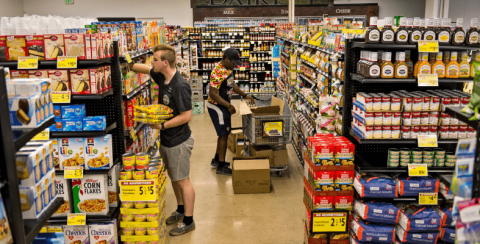Pizza is one of the most beloved foods worldwide. Whether you’re a fan of classic Margherita, loaded pepperoni, or a fan of adventurous toppings like pineapple and barbecue chicken, pizza never disappoints. In “The Pizza Edition,” we’ll take a deep dive into everything you need to know about pizza. From its origins, types, and cooking techniques, to perfecting the art of making pizza at home, this guide will leave you craving your next slice.
The Origins of Pizza: A Slice of History
Before diving into the delicious details of pizza today, let’s take a step back and explore where pizza came from. The pizza we know and love has ancient roots, with similar flatbread dishes dating back to the Greeks and Egyptians. However, the version that became widely popular was created in Naples, Italy.
Naples: The Birthplace of Modern Pizza
Pizza as we recognize it today began in Naples in the 18th century. Back then, pizza was a dish for the poor, sold on the streets to people who needed a quick, affordable meal. This early version of pizza was quite simple: a flatbread topped with tomato sauce, a sprinkle of cheese, and sometimes anchovies.
The invention of Margherita pizza, made with tomatoes, mozzarella, and basil, is credited to a Neapolitan baker named Raffaele Esposito. Legend has it that he made this pizza for Queen Margherita of Italy in 1889, and the combination of ingredients represented the colors of the Italian flag.
Pizza’s Journey to America
Pizza made its way to the United States in the late 19th century when Italian immigrants brought their culinary traditions with them. It quickly became popular in cities with large Italian populations, like New York and Chicago. Over time, pizza evolved in America, leading to the birth of various regional styles.
Types of Pizza: Exploring Different Styles
No two pizzas are the same, and that’s the beauty of this beloved dish. In “The Pizza Edition,” it’s essential to explore the different types of pizza styles around the world, each with its unique flavor, texture, and topping combinations.
1. Neapolitan Pizza
Neapolitan pizza is the original pizza from Naples, known for its soft, thin crust with a slightly charred edge. It’s typically made in a wood-fired oven, which gives the crust its signature texture. Neapolitan pizza usually features simple toppings like tomatoes, fresh mozzarella, and basil. Its beauty lies in its simplicity.
2. New York-Style Pizza
New York-style pizza is known for its large, foldable slices and crispy, chewy crust. This style is typically sold by the slice and has a more straightforward approach to toppings—pepperoni, cheese, and sausage are popular options. It’s a staple in the city and has become iconic in the United States.
3. Chicago Deep-Dish Pizza
If you’re a fan of thick, hearty pizza, Chicago deep-dish is for you. This pizza is baked in a deep pan, giving it a pie-like appearance with a thick crust. The pizza is layered with cheese, toppings, and tomato sauce, making it a filling meal in itself. Its buttery crust and rich flavor are what make this style stand out.
4. Sicilian Pizza
Sicilian pizza is a thick, rectangular pizza that originated in Sicily, Italy. It has a thicker, doughy crust and is typically baked in a rectangular pan. The toppings can vary, but this style often includes tomato sauce, onions, anchovies, and herbs. Sicilian pizza is particularly popular in Italian-American communities.
5. Detroit-Style Pizza
Detroit-style pizza is another thick-crust, rectangular pizza, but what makes it unique is its caramelized, crispy edges. The pizza is baked in a deep rectangular pan, giving it a crunchy, almost fried crust. The toppings, such as pepperoni and cheese, are spread right up to the edges, making every bite flavorful.
6. California Pizza
California-style pizza is known for its inventive toppings and thin, crispy crust. This style allows for creative freedom with toppings, often including fresh vegetables, chicken, and gourmet ingredients like arugula, artichokes, or even truffle oil.
The Art of Making Pizza at Home: Tips and Techniques
Now that we’ve explored the various types of pizza, let’s get into the heart of “The Pizza Edition”—making pizza at home. While pizza may seem like a simple dish, getting the perfect crust and balance of toppings can take practice. Here are some tips and techniques to help you create the perfect homemade pizza.
1. Choosing the Right Dough
The foundation of any great pizza is its dough. The dough you choose will depend on the type of pizza you’re making. For a thin, crispy crust, you’ll want a dough with a high-gluten flour that creates elasticity. If you prefer a thicker, more substantial crust like Chicago deep-dish, you may want to incorporate more oil or butter into the dough to create that flaky, rich texture.
Making dough from scratch can be a rewarding process, but you can also buy pre-made dough from most grocery stores if you’re short on time.
2. Perfecting the Sauce
The sauce is what ties everything together on a pizza. A good pizza sauce is usually made with crushed tomatoes, olive oil, garlic, and herbs like basil and oregano. For a classic Neapolitan pizza, use a simple sauce of San Marzano tomatoes with a touch of salt. If you want to try something different, white pizzas made with garlic and olive oil sauces are a delicious alternative.
3. Choosing the Right Cheese
Mozzarella is the traditional cheese used on pizza, but there’s room for experimentation. Fresh mozzarella is excellent for Neapolitan pizzas, while shredded low-moisture mozzarella is better for New York-style pies. You can also mix in other cheeses like provolone, parmesan, or gouda for more depth of flavor.
4. Baking the Perfect Crust
To achieve a restaurant-quality crust, it’s essential to bake your pizza at the highest temperature your oven allows—typically 475°F to 500°F. Using a pizza stone or steel can also help get that crispy bottom while keeping the interior soft and chewy. If you have a wood-fired oven, even better—it’ll give your pizza that authentic, charred flavor.
Creative Toppings: Elevating Your Pizza Game
In “The Pizza Edition,” there are no limits when it comes to pizza toppings. Whether you prefer classic toppings like pepperoni and mushrooms or want to experiment with more gourmet ingredients, pizza is the perfect canvas for creativity.
Classic Toppings
If you’re sticking with the classics, you can’t go wrong with pepperoni, sausage, mushrooms, onions, or bell peppers. These staples are tried and true for a reason—they provide a satisfying balance of flavors and textures.
Gourmet Toppings
For a more elevated pizza experience, try adding gourmet toppings like prosciutto, arugula, roasted garlic, or figs. The combination of sweet and savory can transform your pizza into a more refined dish. Don’t be afraid to experiment with sauces, either—pesto, barbecue, and even buffalo sauce can take your pizza to the next level.
Vegetarians and Vegans: Options for All
Pizza is one of the most versatile dishes, making it easy to adapt for different dietary preferences. For vegetarians, load your pizza with fresh veggies like spinach, artichokes, and tomatoes. Vegans can enjoy delicious pizzas with plant-based cheese alternatives and a variety of vegetables and herbs.
Read more: StreamEast NFL: Your Guide to Streaming NFL Games Online
FAQs About The Pizza Edition
The perfect pizza dough is a balance of flour, water, yeast, salt, and time. Using high-gluten flour will help create a chewy texture, while letting the dough ferment overnight enhances the flavor. Knead the dough until it’s smooth, and allow it to rise before shaping it into a crust.
Mozzarella is the most popular cheese for pizza, but other options include provolone, parmesan, gouda, and even ricotta for a creamy texture. Mixing different cheeses can add complexity to your pizza’s flavor.
Yes! You can make pizza on a stovetop by using a heavy skillet. Preheat the skillet, place the dough in it, add toppings, and cover it with a lid. Let it cook on low heat until the crust is golden and the cheese has melted.
For a healthier pizza, focus on vegetable toppings like spinach, tomatoes, onions, and bell peppers. You can also use whole wheat dough or cauliflower crust to increase fiber intake. Opt for a light sprinkle of cheese and lean proteins like grilled chicken.
To prevent soggy pizza crust, make sure your oven is preheated to a high temperature. Use a pizza stone or steel to help draw moisture from the dough. Also, avoid adding too many wet toppings, like sauce or fresh vegetables, that release water during cooking.
Conclusion: The Endless Possibilities of The Pizza Edition
Whether you’re a fan of thin-crust Neapolitan pizza or prefer the deep-dish style of Chicago, pizza offers endless possibilities for creativity and flavor. In “The Pizza Edition,” we’ve explored the history, types, and techniques that make pizza one of the most loved dishes worldwide. From choosing the perfect dough and sauce to experimenting with gourmet toppings, pizza is a dish that can be customized for any occasion or dietary preference.
Now that you have the ultimate guide to pizza, it’s time to put your knowledge into practice. Gather your ingredients, fire up the oven, and enjoy crafting the perfect pie!








